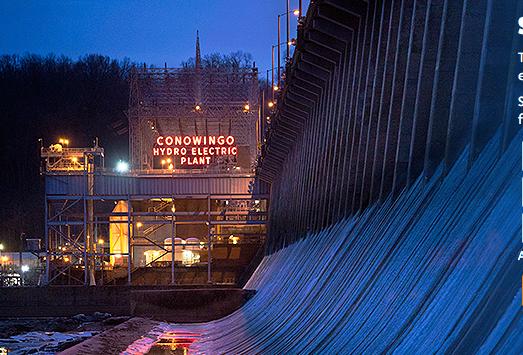Yesterday the Support Conowingo Dam campaign delivered over 11,500 petition signatures to the U.S. Army Corp. of Engineers and the Federal Energy Regulatory Commission calling for a scientific process in adopting a regional solution to a clean Chesapeake Bay. The delivery to the Army Corps comes just before the close of the public comment period on the Corps’ Lower Susquehanna River Watershed Assessment (LSRWA), which ends January 9. The petition outlines the benefits of the Conowingo Dam and implores local officials to preserve the many benefits it provides to the region.
“I am pleased to deliver this petition with more than 11,500 signatures on behalf of those that care about the lower Susquehanna River and protecting the beauty of the area near the Conowingo Dam” said Jan Nethen of Baltimore, MD. “The Conowingo Dam is a source of clean, carbon-free, reliable energy, and its continued operation is critical to the region. The dam also offers a wealth of recreational opportunities like boating, hiking, fishing and bird watching. It is an incredibly popular destination in northeastern Maryland, drawing an estimated 250,000 visitors each year,” said Nethen.
The petition calls for a science-based approach to developing a course of regional action by the state of Maryland, neighboring states, and the federal government in improving the water quality in the Chesapeake Bay. While the Conowingo Dam generates negligible amounts of sediment, the bay’s health is an important issue that requires the attention and action of multiple stakeholders. The signers of the petition believe that the best way to reduce sedimentation and protect the Chesapeake Bay is to let the science lead.
Support Conowingo Dam members have also provided additional written comments to the Corps on the LSRWA. The LSRWA contains the most detailed, scientific study on sediment and its impact to the Bay to date. One of the assessment’s key findings is that the majority of sediment that enters the Chesapeake Bay during storm events originates from upstream sources rather than “scour” from the Conowingo Pond. The Corps report concludes that a significant amount of the sediment and nutrients released during a storm event originated from the upstream drainage area or watershed.



Write a Letter to the Editor on this Article
We encourage readers to offer their point of view on this article by submitting the following form. Editing is sometimes necessary and is done at the discretion of the editorial staff.